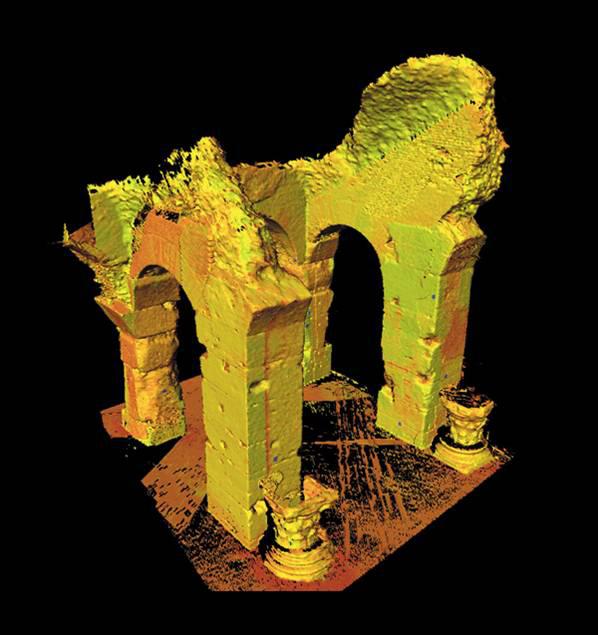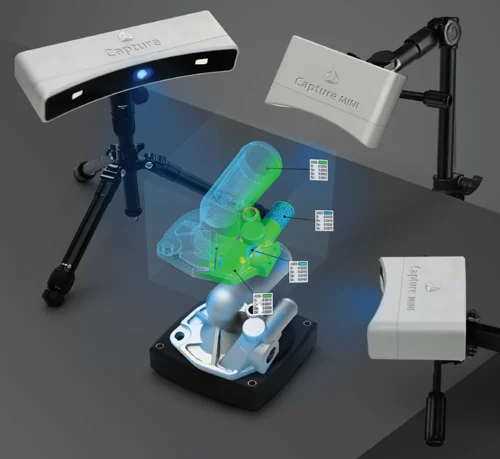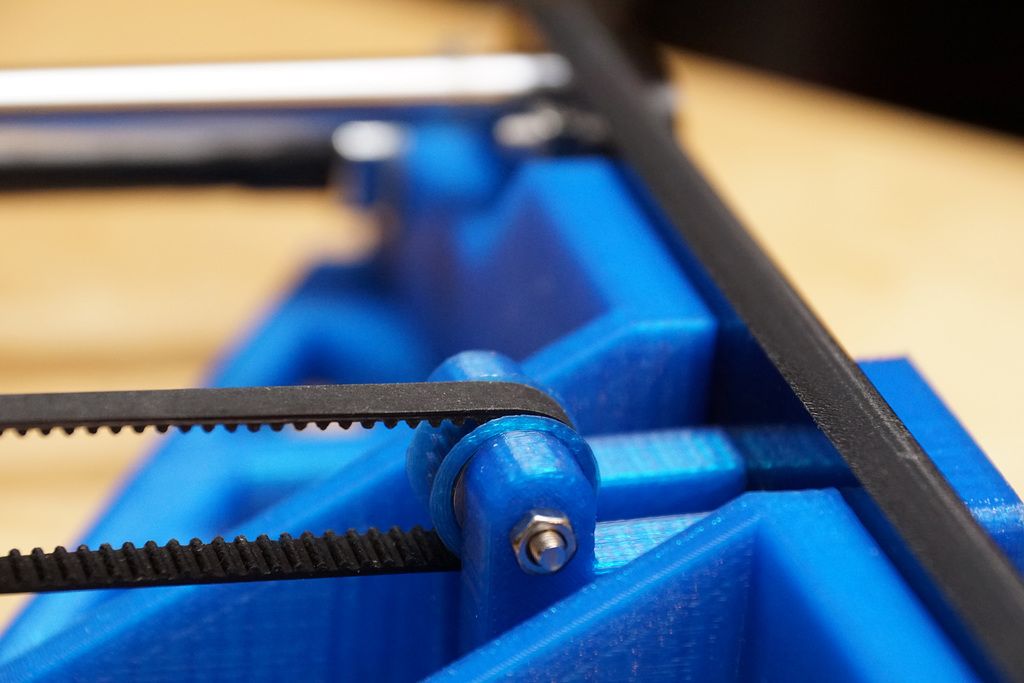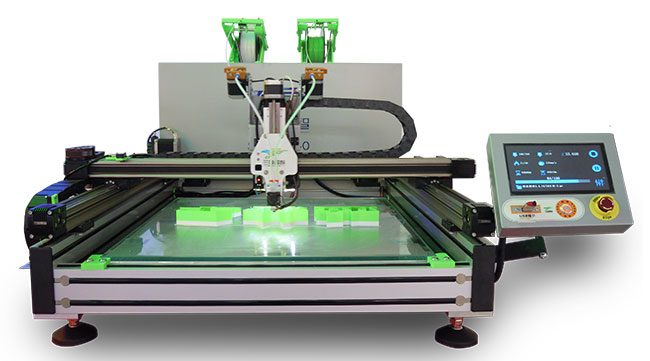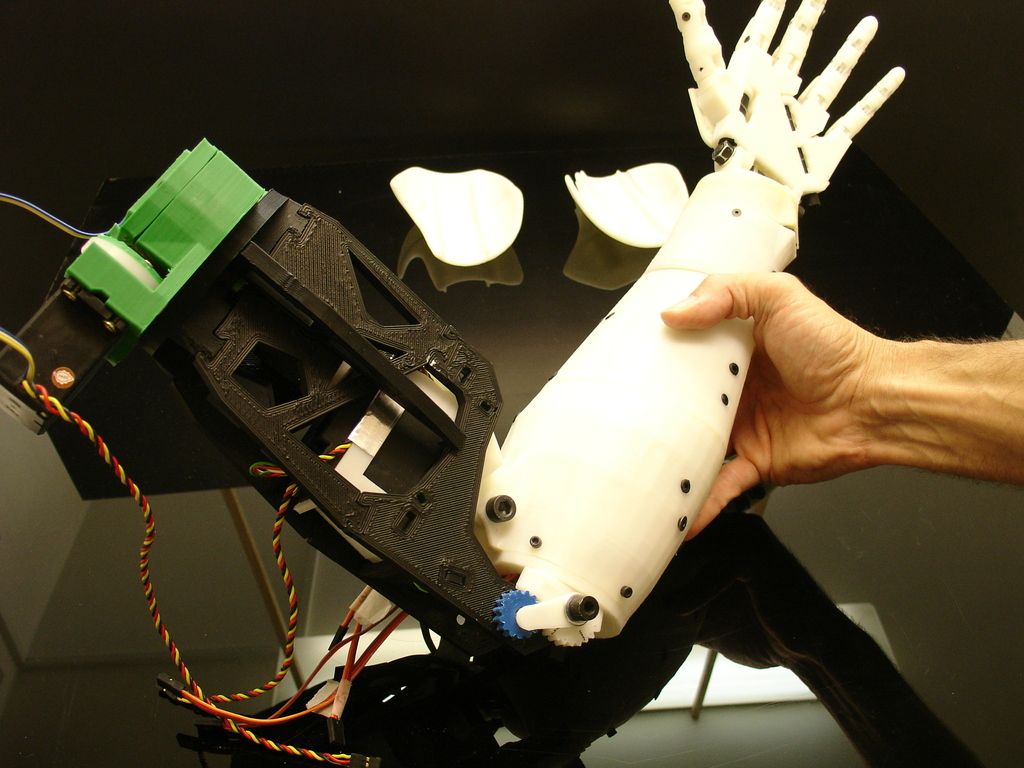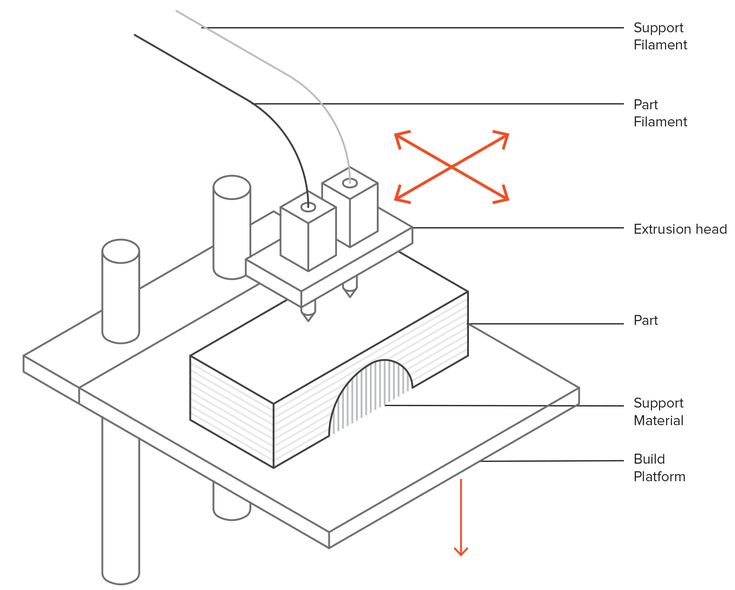3D scanner archaeology
3D scanning and 3D printing for museums and archeology
Introduction
3D printing and 3D scanning for museums and archeology are increasingly used in cultural preservation. 3D technologies provide museum curators, researchers, and archeologists with new tools to capture in 3D ancient objects, artifacts, or art pieces.
They can then study, restore or simply archive them with much more details than traditional 2D pictures. It is even possible to 3D scan entire archeological sites to get a full 3D mapping, via drone or plane 3D scanning.
3D printing and 3D scanning can be used jointly to restore damaged sculptures.
A real ammonite specimen next to a 3D printed one. Source: museumvictoria.comWhat are the benefits of 3D scanning for museums and archeology?
There are many advantages to use 3D scanning in the museology and archeology fields:
- Capturing more details.
3D scanning is more accurate than the human eye and can digitally capture a high level of details. Museums can now create their own 3D archives and store digital 3D models of their entire collections, instead of relying on mere 2D pictures.
- Preserving cultural heritage. Some historical sites are in danger, be that from armed conflicts, natural disasters, or simply time erosion. It is possible to use 3D scanning to keep accurate 3D mappings of those historical locations.
- Improving accessibility to museums and cultural heritage. 3D scanning opens the doors to virtual museum visits. A person can visit an exhibition from the comfort of his own home.
- Restoring and replicating historical artifacts. Restorative 3D scanning, when 3D capture is used in the restoration process, is increasingly used in museums worldwide. To replicate a historical object, a 3D scan has to be done first. The file generated can then be used to 3D print a replica of the piece, in plastic or other materials.

How 3D printing can be used by museums and researchers
3D printing is a new tool accessible to museums and researchers worldwide. 3D printers can be used in several ways, among which:
- Replicating a piece of art or historical artifact with 3D printing. Having an exact copy of a historical item will allow the museum to give more access to his collection to the public. For example, allowing students to touch and manipulate 3D printed art pieces or artifacts is a more recreational way of teaching than just showing the object. A 3D printed replica, based on a 3D scan of the original object, can also be used and manipulated by archeologists or researchers, without fear of damaging the original piece.
- Repairing damaged historical artifacts. If an ancient piece of art is missing a part, for example, 3D printing can be used to repair it by creating a perfectly fitted new part.
 This approach often requires the joint use of 3D scanning and 3D modeling using 3D design software. Restorative 3D printing is on the rise, as the technology improves and the number of printing materials available grows.
This approach often requires the joint use of 3D scanning and 3D modeling using 3D design software. Restorative 3D printing is on the rise, as the technology improves and the number of printing materials available grows.
Ph.D. Researcher and 3D consultant Amelia Knowlson wrote this in-depth article on the future of 3D scanning and 3D printing in museums. According to her, 3D technology is just starting to impact museums and historical research operations.
Restorative 3D printing: using 3D printers to restore or replicate damaged itemsIt is sometimes complicated to restore art pieces and it can lead museum curators to remove the damaged pieces from their exhibits. 3D scanners and 3D printers are increasingly used in the restoration of works of art, including statues for which it is possible to reconstruct missing parts, such as hands (as shown in the picture).
A bronze statue, whose broken hands have been replaced by 3D printed hands. Source: 3Dgeni.us
Source: 3Dgeni.usPreserving historical objects and archeological sites with 3D scanning
A 3D model of an excavation site conducted by Archéotec.Capturing an entire archaeological site with a 3D scanner
Archaeological sites are often found under construction sites and their exploration can stop or slow down the construction project. Therefore, archaeologists only have a limited time to lead searches in those excavation sites.
Terrestrial laser 3D scanners with a large scanning area (sometimes equipped with a GPS or SLAM technology for higher precision) allow archaeologists to capture a full site in 3D and obtain a 3D model of the excavation site. It is thus easier to visualize locations of archaeological remains and optimize the excavation site searches.
High-precision historical research with 3D scanners
3D models generated with a 3D scanner are often used by researchers, who can zoom in on the 3D model of the item captured in 3D. The high level of details of the 3D scan can be very useful for research purposes since almost invisible details can be revealed with this technology. Working on 3D models instead of original pieces also enables researchers to protect light-sensitive artifacts for example.
The high level of details of the 3D scan can be very useful for research purposes since almost invisible details can be revealed with this technology. Working on 3D models instead of original pieces also enables researchers to protect light-sensitive artifacts for example.
With 3D printing, it is possible to replicate an entire object or specific parts. Researchers can then work on the 3D printed replica and manipulate it while preserving the original objects.
A 3D scan of a human-sized statue with the Artec Eva handheld 3D scanner. Source: ima-solutions.fr3D scanning fosters global collaboration
Researchers worldwide can share 3D models obtained by 3D scanning and collaborate remotely. Instead of having to ship archaeological remains or items, 3D scanners allow scientists to capture 3D models of these artifacts, the 3D files obtained can then easily be shared via the internet with the global scientific community.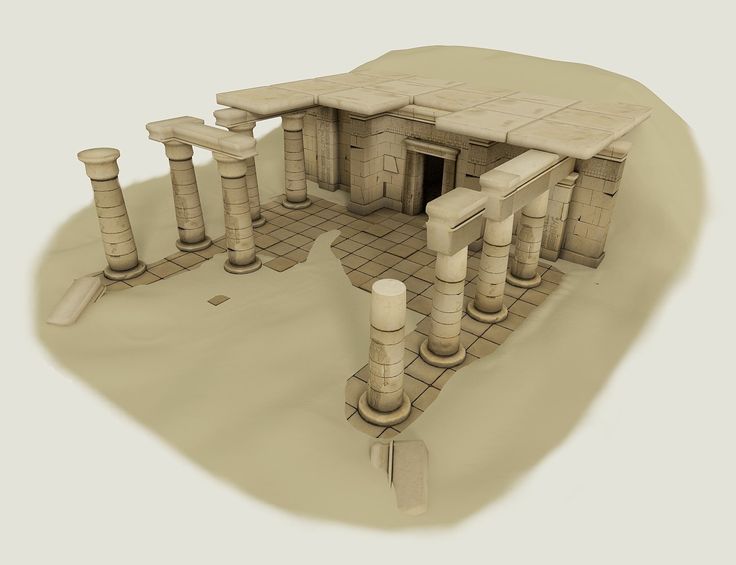
3D scanning and 3D printing: new tools for museums
Visiting a museum from your home thanks to 3D scanning
The development of virtual museums is supported by the overall growth of the 3D printing ecosystem, including non-contact 3D scanners.
A dual view of a “fardo”, a Peruvian coffin and its virtual exploration conducted by the Quai Branly Museum.For example, French startup Arskan 3D scanned some of the main pieces from the Museum of Fine Arts of Lyon, to create an experience out of the ordinary.
The launch of this interactive experiment in fall 2015, accessible via an internet connection, will make the Lyon Museum the first virtual 3D museum.
A member of Arskan scanning in 3D a statue with the 3D scanner FaroArm. Source: elretohistorico.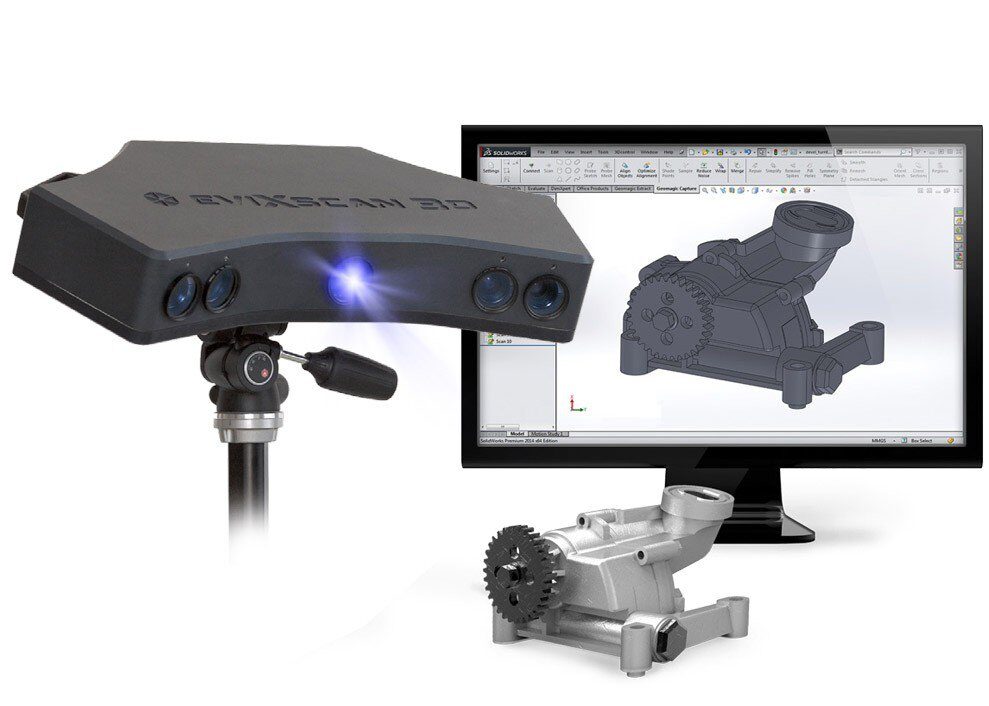 com
comCreating virtual explorations with 3D scanning
Thanks to 3D scanners, it is possible to create “virtual explorations”, based on a 3D rendering of a given archaeological site, monument, or piece of art. The Quai Branly museum in Paris uses 3D scanning to allow people to “see through” ancient coffins filled with artifacts, which could not be opened without damaging the items inside.
Preserving original collections with 3D scanning
With 3D scanning, archaeologists or museum curators can improve the conservation of their collections. They can even repair or duplicate the most damaged items, by using 3D printing and 3D scanning. It only takes a few minutes to 3D scan a human-size statue. The 3D model obtained (a simple file) can then be saved, archived, edited using CAD software and 3D printing.
Note: Non-contact 3D scanners are often recommended to avoid damaging the most fragile items.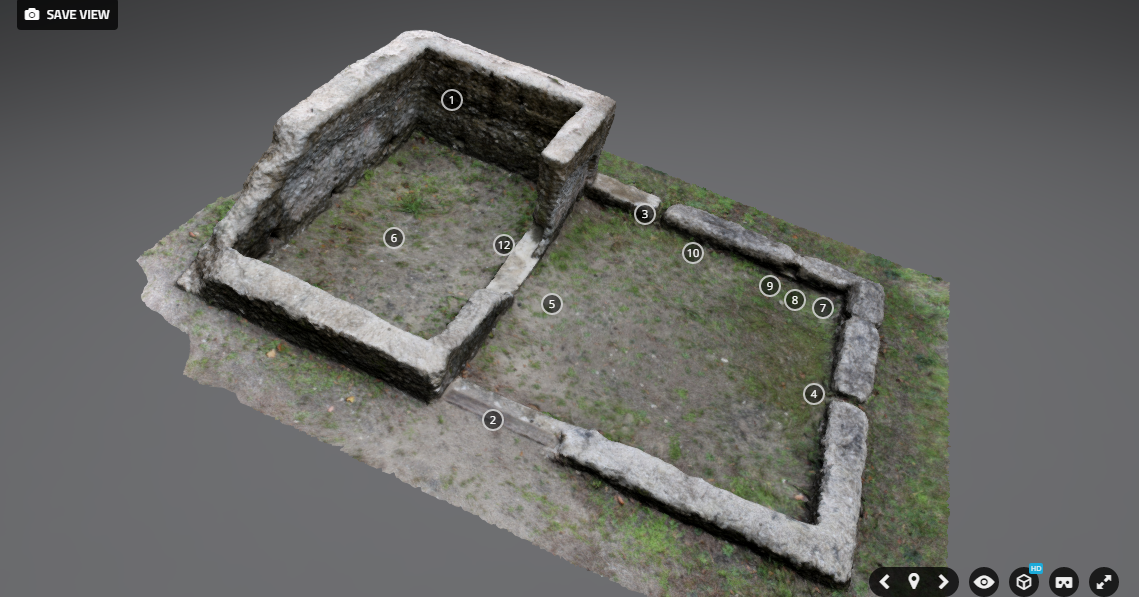
Bring home a 3D printed version of your favorite art piece
Visitors who own a 3D printer can download 3D models from the museum’s exhibition and 3D print them at home. This license system is offered, for instance, to visitors at the Art Institute of Chicago. For this type of use, extrusion technology is recommended, but it only allows to 3D print objects in plastic.
Facilitating access to cultural heritage through 3D scanning
3D printing can improve museums accessibility for visually impaired visitors
With 3D printing, museums can create realistic replicas of objects from their collections. Visitors can then manipulate these 3D printed versions without damaging the originals. 3D printing also offers the opportunity to create physical representations in 3D of paintings. The Prado Museum and the Museum of Manilla have already taken advantage of these opportunities.
The Prado Museum and the Museum of Manilla have already taken advantage of these opportunities.
For instance, in Spring 2015, an exhibition at The Prado Museum allowed blind visitors to discover five masterpieces thanks to 3D printing. Those paintings in relief allowed visitors to experience the exhibit by touching the 3D printed version of the masterpieces. An innovative way of using 3D printing to prove that art goes beyond senses.
A 3D printed painting displayed at the Prado Museum in Madrid to provide a better visitor experience. Source: ufunk.netDownloading 3D models of cultural heritage items for 3D printing
Downloading 3D designs of historical objects, artifacts and art pieces
It is now possible to download 3D models of art pieces or historical artifacts to visualize them using 3D software and, why not, 3D print replicas using a 3D printer.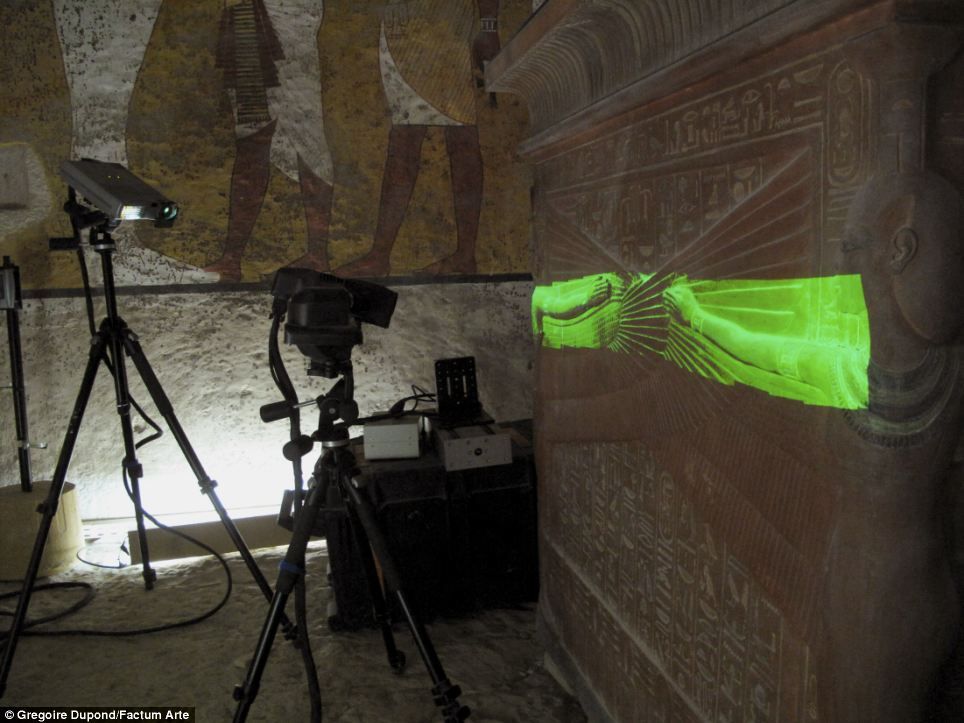 Several online repositories of printable 3D designs of art and historical objects are available. The largest cultural heritage 3D files databases are the following:
Several online repositories of printable 3D designs of art and historical objects are available. The largest cultural heritage 3D files databases are the following:
- Sketchfab > Museums. More than 30 museums, including the famous British Museum and The Metropolitan Museum of Art, share here thousands of high-resolution 3D models obtained from 3D scans of their collections. These files are even visible in VR (Virtual Reality)!
- MyMiniFactory > Scan The World. Thousand of 3D files from artists and museums all across the globe are available here, obtained from real-life objects scanned in 3D. The designs are 100% 3D printable.
- African Fossils. You will find here HD 3D designs of fossils, categorized by time era, and type (hominids, animals, tools). A wiki section is linked to each 3D model, with detailed explanations and background information on the fossil.
 A powerful educative resource.
A powerful educative resource. - MorphoSource. MorphoSource is an online repository that allows researchers from universities and labs worldwide to store, share, and distribute their 3D data. You will find here thousands of 3D morphological data sets, downloadable for free. 3D file formats include tiff, dicom, stanford ply, and stl. You can browse the cultural files by Institution, Taxonomy, Bibliography, and Project.
Case study: the Mosul museum in Iraq
Ancestral sculptures in 3D
Using 3D printing, Iranian artist Morehshin Allahyari has set out to replicate the millennium-old sculptures from the Mosul Museum, which have been destroyed in 2015 by Daesh jihadists.
With the help of experts from US and Iran universities, she managed to design 3D models of the destroyed sculptures. She based her work on documents left about these art pieces.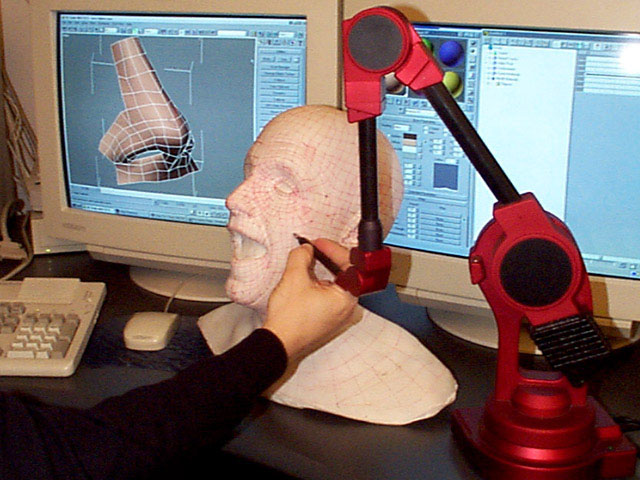
3D files of the sculptures will be made available to the public and then allow anyone to 3D print them at home. A great way to ensure that this heritage continues to live for the centuries to come.
A 3D printed reproduction of King Uthal. Source: Morehshin AllahyariBlog – 3D Scanning Archaeology
Blog Posts on the Digital 3D options in Anthropology / Archaeology
These posts are written and formatted to be read by anybody, not just someone specifically in these fields. Don’t feel like you have to be an anthropologist, archaeologist, 3D scanner/printer, or anything specific to be able to read and understand what’s posted; my main goals in doing this is to share this information with anyone interested, no matter their background.
There’s a very fun phrase that is considered a curse in Chinese language and culture. The phrase, translated, is simply this: “May you live in interesting times.” Info Source: https://quoteinvestigator.com/2015/12/18/live/ Like it or not, we now live in extremely interesting times.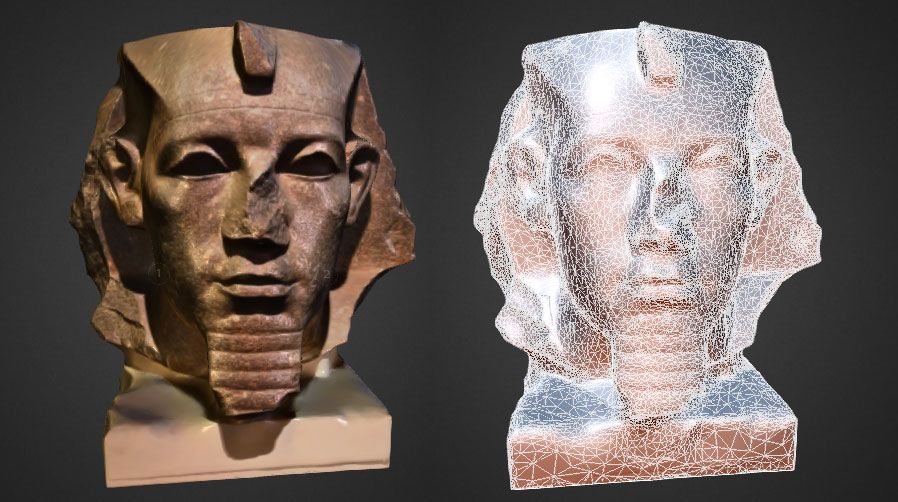 I’m not here to pass judgement on whether that is a gift or a […]
I’m not here to pass judgement on whether that is a gift or a […]
by Kylie Surfer
“What is GIS?” In 2019, I heard this question asked aloud to a classroom of maybe ten people twice a week by Dr. Steven Hick, the instructor for the Introduction to GIS class I took during Winter Quarter at the University of Denver. Dr. Hick was a pretty awesome professor. He was a former park […]
by Kylie Surfer
Hey everyone! I am excited to announce that today, the digital magazine NatureVolve published their 6th issue, and in it there is a wonderful feature on the 3D scanning and printing work that I do! I’m so excited and thankful to have had this happen, and I wanted to share the article with all of […]
by Kylie Surfer
Hey everyone, it’s finally here! I have the copy of my own video presentation up and ready to share! Sadly, it’s just my own, I don’t have the videos for any of my colleagues, but if there’s enough interest I’ll reach out to them to ask fro their videos or to interview them about their […]
by Kylie Surfer
Hey everyone! So as I hope you all remember, on Friday I presented my Capstone research via Zoom to the DU Anthropology Department, and I told you all I would try to get a video recording of my presentation to post onto here.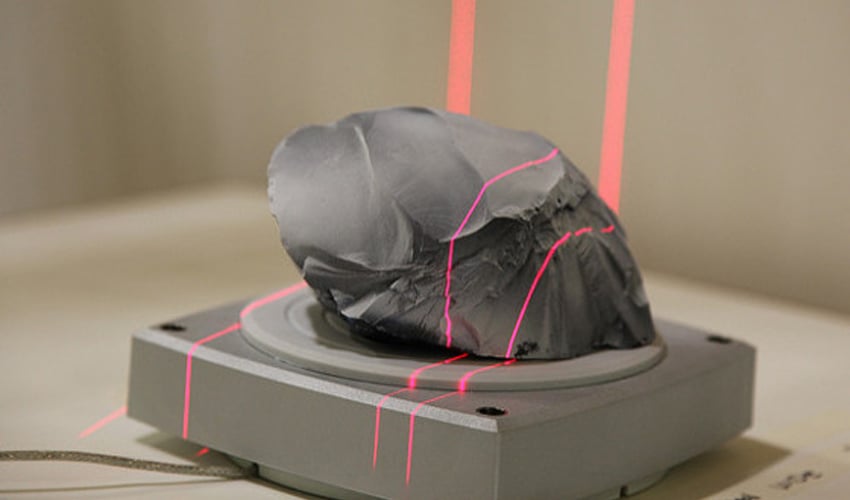 As it turns out, the department was one step ahead of me. […]
As it turns out, the department was one step ahead of me. […]
by Kylie Surfer
So if the title didn’t tell you what this is already, then let me re-iterate for you. After double-checking to make sure that doing this would not cause any issues with my former academic advisor Dr. Clark or with the University of Denver as a whole, I am now posting my capstone paper online for […]
by Kylie Surfer
Hello, everyone! With a lot of people currently having their lives altered due to shut-downs of schools, encouragement to work from home, or other changes currently being made in correlation to the COVID-19 pandemic, it’s a bit hectic, in all honesty. Everyone is being encouraged to stay home if possible, social distancing is making it […]
by Kylie Surfer
Who am I? That’s a great question.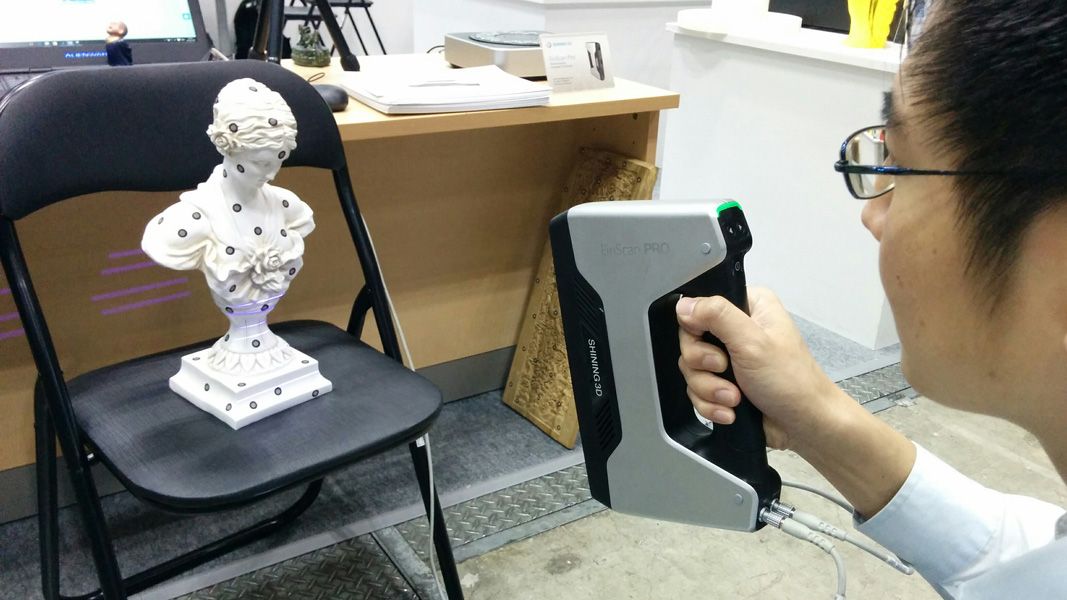 I’m an archaeology nerd.
I’m an archaeology nerd.
by Kylie Surfer
Fun fact! This website/blog isn’t the first I’ve written! Come check out the first one I actually did for IFR!
by Kylie Surfer
Just a short drabble on a few possibilities through 3D Scanning. If you can’t tell, I’m really really passionate about 3D Scanning.
by Kylie Surfer
Follow My Blog
Get new content delivered directly to your inbox.
Type your email…
Like this:
Like Loading...
3D scanning in archeology and museums
There are a number of areas of human activity where 3D technologies have long become simply irreplaceable.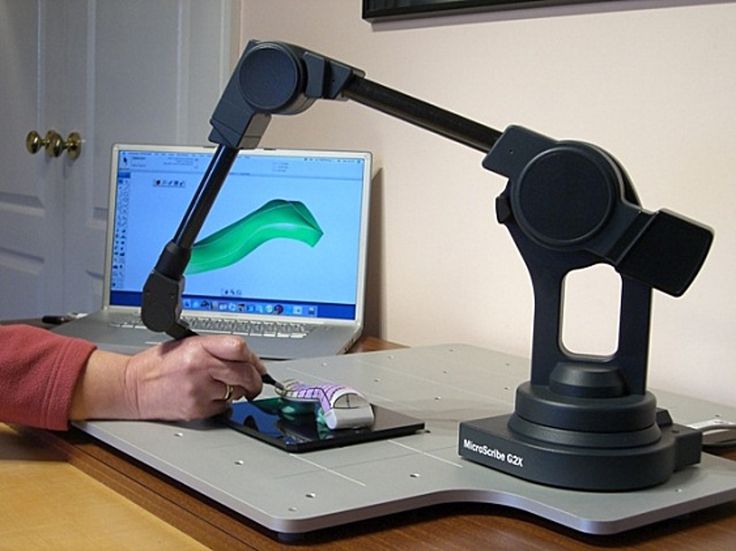 Museums and archeology are among such areas. Thanks to 3D scanning in this area, it is possible to preserve and restore historical values and even make discoveries. And working with a digital 3D archive allows you to use the services and assistance of specialists around the world without leaving for advice and without transporting fragile objects. Sometimes many objects cannot be transported at all, and when they are removed, they or their parts may be completely lost. Thus, 3D scanning helps to save information about valuable artifacts in digital form with high accuracy.
Museums and archeology are among such areas. Thanks to 3D scanning in this area, it is possible to preserve and restore historical values and even make discoveries. And working with a digital 3D archive allows you to use the services and assistance of specialists around the world without leaving for advice and without transporting fragile objects. Sometimes many objects cannot be transported at all, and when they are removed, they or their parts may be completely lost. Thus, 3D scanning helps to save information about valuable artifacts in digital form with high accuracy.
Archeology provides for mandatory fixation of found material. This is how archaeological research is carried out, because excavations involve the complete loss of the cultural layer. And the most modern way of fixing the material is 3D scanning. This research technique is of particular value, since it is not necessary to extract the object for work, and this, in turn, allows you to maintain its integrity.
Advantages of 3D scanning in the archaeological field:
- fast and accurate formation of a 3D digital object;
- possibility of detailed examination not in the field;
- complete preservation of the artifact;
- the ability to work with both small and large objects.
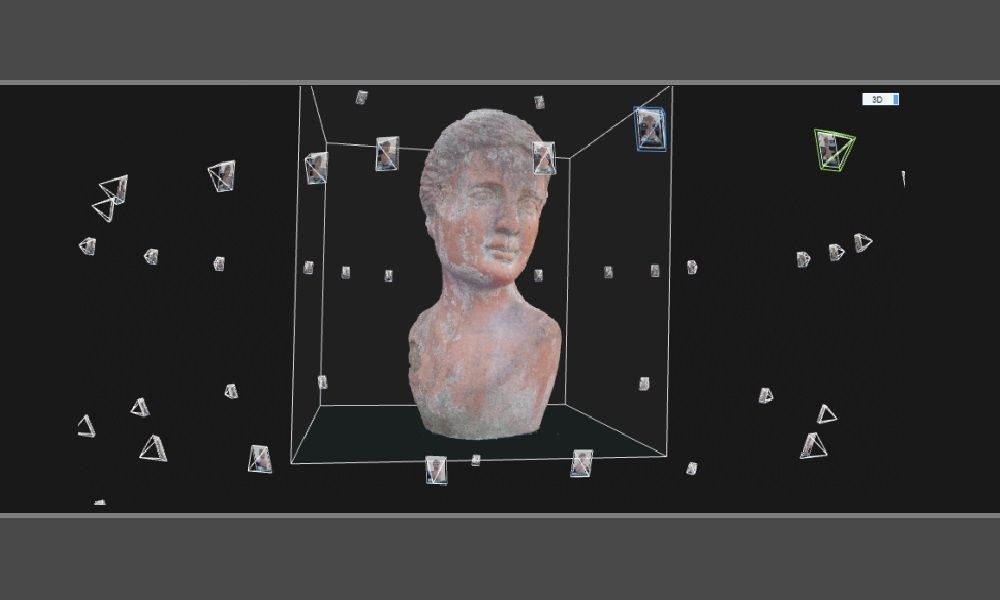
Currently, not all archaeological expeditions in Russia use 3D scanners, although it is generally recognized that these techniques are very promising. In addition, 3D scanning can help restore the original picture.
3D scanning in museums
Not all artifacts remain in excavation sites, many of them are delivered to museums for display and work. Some of the exhibits are in storage. Using 3D scanning, you can not only create a 3D archive of all museum objects, but also use digital copies for research. In particular, it is possible to recreate precise three-dimensional objects from fragments. For example, similar work was carried out with a clay vase dating back more than five thousand years. At the same time, the texture, color and texture of the object are perfectly accurately transmitted, which is very valuable for further work.
A number of objects are being scanned for digital preservation, as they are so fragile that it is a matter of time before they are lost.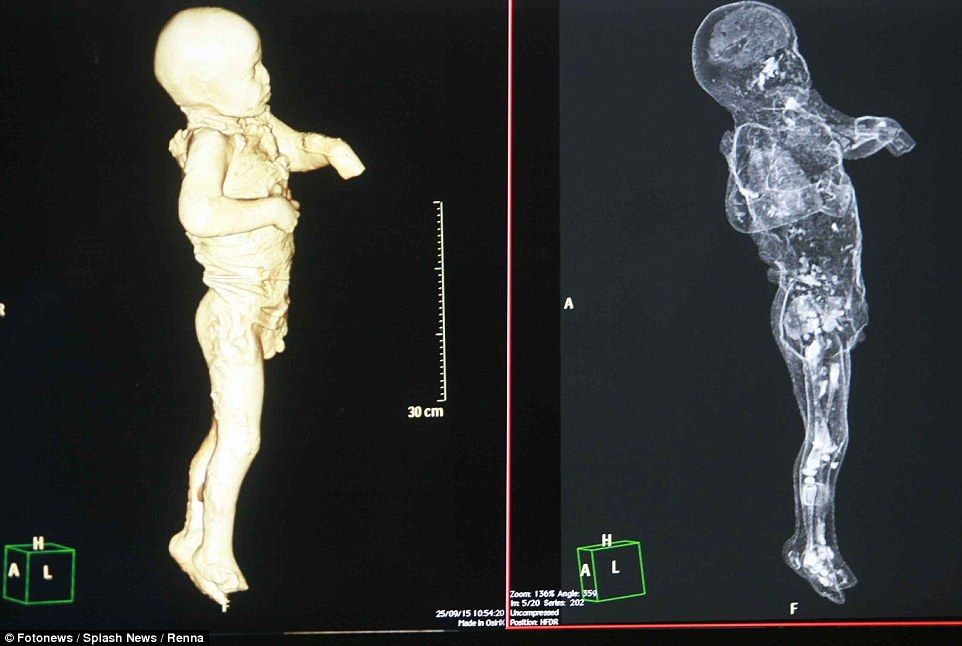 It is generally not possible to work with such materials.
It is generally not possible to work with such materials.
When scanning the remains, you can recreate the appearance. This applies to the skeletons of people, dinosaurs and ancient mammals. 3D technologies allow you to recreate the appearance with almost 100% accuracy.
Thus, 3D scanning is an almost indispensable technology that allows museums to recreate the original appearance of artifacts, preserve them for future generations, and even organize virtual exhibitions so that anyone, anywhere in the world can see valuable exhibits in great detail.
Equipment options
Different models of 3D scanners can be used for archeology and museum work. The most popular are:
- NextEngine
- Breuckman smartSCAN
- Faro Laser Scanner Focus 3D
- ZScanner 700
- ScanBright archeo
- Thor3D and others.
At the same time, technology does not stand still, shortcomings are constantly being eliminated, and perhaps in a couple of years even more advanced equipment will appear that allows 3D scanning in the most difficult conditions at amazing speed.
How a 3D scanner works, types of devices and existing technologies
3D scanning and printing of three-dimensional objects are new technologies that have quickly conquered the market. 3D scanners are in demand in medicine, the arts, the automotive and aviation industries. Work on a new product begins with a 3D design that can be created by hand, using 3D modeling software, or digitizing an existing item to be edited.
3D scanner - a device that allows you to create a computer model in volume.
Applications
There are tasks that can only be solved with the help of special equipment that operates in a non-contact way. Obtaining copies of works of art for restoration or production of reproductions and their subsequent mass production is possible by scanning with a 3D scanner. The equipment is also popular with archaeologists when there are difficulties with access to the area under study, or the object under study is so fragile that you need to touch it very carefully.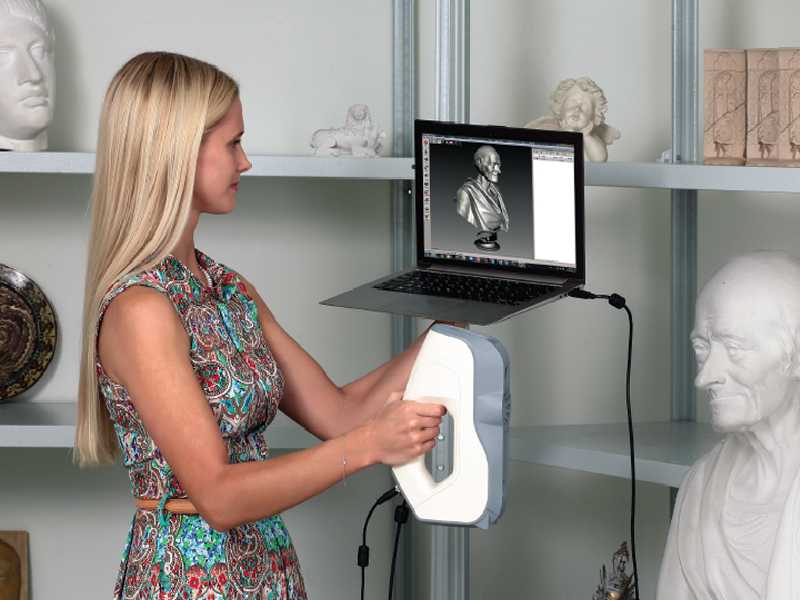
Faro photo.
Laser devices also help architects create 3D models of existing buildings for editing and virtual testing. The equipment is used in geodesy and cartography when studying the natural landscape.
More about the 3D scanner FARO Focus 3D
The 3D scanner is used in various sectors of industry and science, in design, in the development of augmented reality or computer games.
For example, Texel is building a system that allows shoppers to try on clothes online in virtual reality fitting rooms through their 3D-scanned avatar.
Installation of a virtual Texel fitting room in Dubai. Photo Texel.
Portal BX 3D human scanner. Photo Texel.
Texel parametric human body model, 3D digital avatar. Photo Texel.
Photo Texel.
How the 3D scanner works
Volumetric scanning instruments measure objects with complex geometry and convert the processed information into a point cloud. The work of a 3D scanner involves the construction of a polygonal model that can be upgraded: make changes to the structure, experiment with resources and shape, and add new functions to the product. The device calculates the distance to the surface of the object, fixes the coordinates of these points on the scanned object, analyzes the data and builds a detailed 3D model. The structure of the device includes illumination, lasers, cameras, rangefinders.
There are two technologies for object processing: contact and non-contact. All scanning devices operate on their basis.
Contact - CMM (coordinate measuring machine - coordinate measuring machines).
When buying equipment for work, you need to study the basic characteristics of a 3D scanner:
• principle of operation;
• Scan accuracy;
• measurement range;
• Color rendition.
Properly selected technique allows you to get results when working in various conditions: in poor lighting, vibrations, if the subject of study is far away or underground.
3D Scanner Views
Several methods can be used to capture the characteristics of a structure in space and display the data in a computer layout. Manufacturers offer the following types of devices:
• 3D scanners, the principle of operation of which is the measurement of reflected structured light;
• photogrammetry equipment;
• Laser models;
• Mechanical or ultrasonic scanning equipment.
Reflected structured light
This technology involves the use of equipment that works by projecting a light grid (pattern) onto the measured object. Its curvature on the surface is read by the camera, which helps to get a 3D layout. The equipment functions very quickly and in any light. The technique conveys information about the color of the item being scanned.
Photogrammetry
This method involves building layouts based on an array of images taken from different angles. The more photos, the more detailed the model. The principle of operation of a 3D scanner is based on an algorithm that determines the location of the particles of an object through the study of their relative placement. This is the most widespread method of work that helps to obtain a digital image using professional cameras or using a smartphone camera.
The more photos, the more detailed the model. The principle of operation of a 3D scanner is based on an algorithm that determines the location of the particles of an object through the study of their relative placement. This is the most widespread method of work that helps to obtain a digital image using professional cameras or using a smartphone camera.
Non-contact 3D laser scanner
This technology is more precise but slower. A technique that uses a laser to measure an object captures information about its configuration, dimensions, and the presence of porous structures. There are several variants of the method. Time-of-flight 3D scanners build the surface of the element under study by analyzing the change in the return time of the laser pulse reflected from the surface of the part. Triangulation devices measure the deviation of the angle of the reflected beam after passing through a special lens.
Mechanical method
The process of digitizing with a contact 3D scanner is the most accurate, but slow.